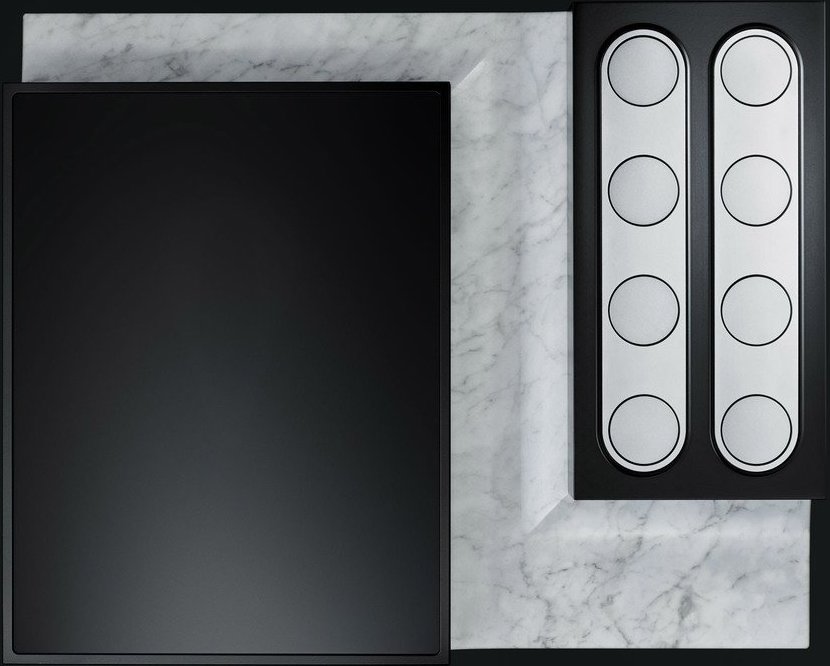
Its been a while, I’ve fallen out of the habit of blogging, and have decided to get back in to it. One thing that’s been on my mind recently is Headphones, and I realise that it’s probably something most people don’t think about much – just go in to a store and buy some for however much money you want to spend, which will certainly work for under $100 (note: all prices are in Australian $).
Over $100 it gets tricky as you have brands like Apple Beats Headphones which are just over-priced crap (and they’re not the only ones). Luckily though, the sweet-spot for good headphones is around $1-200 with the next stop being $1k and over – you just have to know what you’re buying. If you’ve not been in a studio, or created a home studio, you may not of heard of most of the brands I’m going to mention, but all these brands are literally the ones used to produce the music we all listen to.
 Let’s start on the “budget end” and for those I’d have to recommend the Roland RH-5s. Roland are probably best known for their instruments and studio equipment, but not so much their headphones. When I bought a pair of these a few years ago I did a lot of research and found them to be the best value for money “entry level headphones” (ie not crap). I think I payed around $100 at the time, but you can now get them for $75 which makes them incredible bargain. Their specifications are better than a lot of headphones which cost twice the price with a frequency response (ie the frequencies they will reproduce) of 10Hz to 25kHz.
Let’s start on the “budget end” and for those I’d have to recommend the Roland RH-5s. Roland are probably best known for their instruments and studio equipment, but not so much their headphones. When I bought a pair of these a few years ago I did a lot of research and found them to be the best value for money “entry level headphones” (ie not crap). I think I payed around $100 at the time, but you can now get them for $75 which makes them incredible bargain. Their specifications are better than a lot of headphones which cost twice the price with a frequency response (ie the frequencies they will reproduce) of 10Hz to 25kHz.
The astute amongst you will say “Hang on, humans can only hear between 20Hz and 20kHz” and you’d be (pretty much) correct, but that would be with respect to a 20yo who had not been to any loud concerts (hearing loss in the young is horrendous, also because of in ear headphones). As you get older, that top frequency gets lower, so the average 50 year old tops out around 15kHz so an important thing is to only buy better headphones if you can actually hear the difference. Having said all that, there’s a lot more subtlety to response curves than just the frequencies, just as cameras are not all about megapixels.

Unfortunately, my Roland’s met an unfortunate end under someone’s foot (my fault, I’d left them on the floor!) which set me off on my quest for a new pair of headphones. Luckily, it was End of Financial Year here so there were a heap of sales. Looking at the place where I get most of my gear, https://djcity.com.au/, they had a great price on some KRK KHS8400s, reduced from $250 to $180 – done! How do these compare to RH-5s? They are significantly better:
- The outer pads are larger and made of memory foam – I can tell these will be good for multi-hour sessions
- Their frequency response is 5Hz – 23kHz, and you do notice the increased bass. Although 5Hz is below our threshold of 20Hz, our bodies can still sense this and all I can say is that the “bass is bassier”. Top end – superb! Can be almost a bit too sharp with some music (probably my only criticism) but I can easily correct for that with EQ.
- The separation is phenomenal! Instruments are much more clearly placed in the stereo field. I don’t know how they do this, but definitely better than the RH-5’s – part of the art of any acoustic design.
These headphones are basically so good that I’d say even if you can’t get them on sale, they’re still a good buy at $250. It’s also worth noting that some reviewers have referred to the KRK’s as “the best headphones available for under $1,000”.
 What if you want to spend over $1,000? To me, there’s only one brand in this category, and that’s Sennheiser. Call me a “Headphone Snob” (and I probably am, so it’s OK ;), but they are the ones who literally invented the open ear headphone and they are literally setting the standard. In fact, my first pair of headphones that I personally bought were Sennheisers and I kept buying them for a few decades, but they now seem to of become a “premium brand” and I think you can do much better than them in the low cost and mid range area. At the top end though, they still rule for me! At $2,000, the Sennheiser HD 800s pretty much top things out. I’ve never tried them, but could take an educated guess, based on the law of diminishing returns, that they’d only be 10-20% better than the KRKs I’m using at the moment.
What if you want to spend over $1,000? To me, there’s only one brand in this category, and that’s Sennheiser. Call me a “Headphone Snob” (and I probably am, so it’s OK ;), but they are the ones who literally invented the open ear headphone and they are literally setting the standard. In fact, my first pair of headphones that I personally bought were Sennheisers and I kept buying them for a few decades, but they now seem to of become a “premium brand” and I think you can do much better than them in the low cost and mid range area. At the top end though, they still rule for me! At $2,000, the Sennheiser HD 800s pretty much top things out. I’ve never tried them, but could take an educated guess, based on the law of diminishing returns, that they’d only be 10-20% better than the KRKs I’m using at the moment.
One can go further though, and that’s in to the world of “high end audiophile headphones” – with these, we’re talking about cans which you use on your yacht whilst docked at Monaco during “the season”

This brings us in to the rarefied territory of the Sennheiser Orpheus HE-1s – with a price of around $80,000… you know these will be no “ordinary headphones”. But are they any better than Sennheiser HD 800s?
 The HE-1s are a follow up to their legendary HE-90s, which were quite revolutionary at the time, although not the first. The HE-1s are certainly amazing, with a response from 8 Hz (note: my KRKs are lower at 5 ;) to more than 100 kHz (that’s 4 times “normal headphones”!) they have the lowest distortion ever measured in a sound reproduction system: 0.01% at 1 kHz, 100 dB SPL.
The HE-1s are a follow up to their legendary HE-90s, which were quite revolutionary at the time, although not the first. The HE-1s are certainly amazing, with a response from 8 Hz (note: my KRKs are lower at 5 ;) to more than 100 kHz (that’s 4 times “normal headphones”!) they have the lowest distortion ever measured in a sound reproduction system: 0.01% at 1 kHz, 100 dB SPL.
 The interesting thing is that when you look at the original reviews for the HE-90s, they actually weren’t that complimentary: “sounded a bit shy on the bottom—it lacked sufficient body and weight, seemed rather lean through the midbass, and was without a fully natural warmth“. Unfortunately in these days of Corporate Suckupery, Consumerism and “news” organisations which are mostly extensions of PR firms, I don’t believe the reviews.
The interesting thing is that when you look at the original reviews for the HE-90s, they actually weren’t that complimentary: “sounded a bit shy on the bottom—it lacked sufficient body and weight, seemed rather lean through the midbass, and was without a fully natural warmth“. Unfortunately in these days of Corporate Suckupery, Consumerism and “news” organisations which are mostly extensions of PR firms, I don’t believe the reviews.
 Besides, if you’re going electrostatic, the best bet is the company who invented them, the Japanese company Stax and their ST-009S headphones which will probably be better than the Sennheisers and only set you back $4,325 (don’t know whether that AU or US, but at this level, does it matter?).
Besides, if you’re going electrostatic, the best bet is the company who invented them, the Japanese company Stax and their ST-009S headphones which will probably be better than the Sennheisers and only set you back $4,325 (don’t know whether that AU or US, but at this level, does it matter?).
 Where does that leave us? Well, with me and my KRK KHS8400s – I’ve been wearing them for around 5 hours today and they’re still comfy. They may not look as snazzy as all those high-end headphones, but for my ears they’ll do as I’ve been listening to Blade Runner 2046, Pink Floyd, Daft Punk, Dream Theater, Tron, Bach, Louis Armstrong and A Clockwork Orange and all I can say is that they produce the best sound that I’ve heard so far, so they’ll be good enough for quite a while, as long as I don’t leave them on the floor…
Where does that leave us? Well, with me and my KRK KHS8400s – I’ve been wearing them for around 5 hours today and they’re still comfy. They may not look as snazzy as all those high-end headphones, but for my ears they’ll do as I’ve been listening to Blade Runner 2046, Pink Floyd, Daft Punk, Dream Theater, Tron, Bach, Louis Armstrong and A Clockwork Orange and all I can say is that they produce the best sound that I’ve heard so far, so they’ll be good enough for quite a while, as long as I don’t leave them on the floor…





 OK, this may open a can of worms, as writing about speakers is akin to saying what the “best” programming language is, so I’d better be precise about what I’m writing about – it won’t be about:
OK, this may open a can of worms, as writing about speakers is akin to saying what the “best” programming language is, so I’d better be precise about what I’m writing about – it won’t be about: What this post is about is a set of “Studio Monitors” which I bought for use with my various synthesisers and then discovered of course that they were also about what I was using with my Mac (or PC if you’re less fortunate ;)
What this post is about is a set of “Studio Monitors” which I bought for use with my various synthesisers and then discovered of course that they were also about what I was using with my Mac (or PC if you’re less fortunate ;) Right! Having got all the qualification out of the way, I’ve managed to stumble my way in to what are probably the best value Monitor Speakers for <$500 (AU). How can I say that? It all starts with a guy called
Right! Having got all the qualification out of the way, I’ve managed to stumble my way in to what are probably the best value Monitor Speakers for <$500 (AU). How can I say that? It all starts with a guy called 
 Let’s start on the “budget end” and for those I’d have to recommend the
Let’s start on the “budget end” and for those I’d have to recommend the 
 What if you want to spend over $1,000? To me, there’s only one brand in this category, and that’s Sennheiser. Call me a “Headphone Snob” (and I probably am, so it’s OK ;), but they are the ones who literally invented the open ear headphone and they are literally setting the standard. In fact, my first pair of headphones that I personally bought were Sennheisers and I kept buying them for a few decades, but they now seem to of become a “premium brand” and I think you can do much better than them in the low cost and mid range area. At the top end though, they still rule for me! At $2,000, the
What if you want to spend over $1,000? To me, there’s only one brand in this category, and that’s Sennheiser. Call me a “Headphone Snob” (and I probably am, so it’s OK ;), but they are the ones who literally invented the open ear headphone and they are literally setting the standard. In fact, my first pair of headphones that I personally bought were Sennheisers and I kept buying them for a few decades, but they now seem to of become a “premium brand” and I think you can do much better than them in the low cost and mid range area. At the top end though, they still rule for me! At $2,000, the 
 The HE-1s are a follow up to their legendary HE-90s, which were quite revolutionary at the time, although not the first. The HE-1s are certainly amazing, with a response from 8 Hz (note: my KRKs are lower at 5 ;) to more than 100 kHz (that’s 4 times “normal headphones”!) they have the lowest distortion ever measured in a sound reproduction system: 0.01% at 1 kHz, 100 dB SPL.
The HE-1s are a follow up to their legendary HE-90s, which were quite revolutionary at the time, although not the first. The HE-1s are certainly amazing, with a response from 8 Hz (note: my KRKs are lower at 5 ;) to more than 100 kHz (that’s 4 times “normal headphones”!) they have the lowest distortion ever measured in a sound reproduction system: 0.01% at 1 kHz, 100 dB SPL. The interesting thing is that when you look at the original
The interesting thing is that when you look at the original  Besides, if you’re going electrostatic, the best bet is the company who invented them, the Japanese company
Besides, if you’re going electrostatic, the best bet is the company who invented them, the Japanese company  Where does that leave us? Well, with me and my
Where does that leave us? Well, with me and my 









You must be logged in to post a comment.